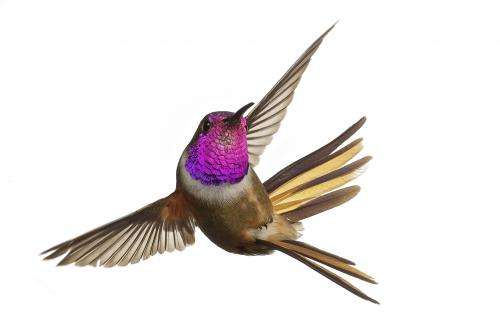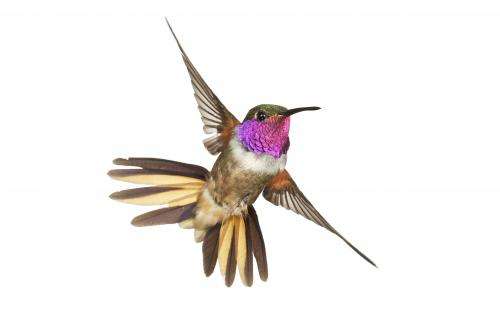A new species of hummingbird?

The Bahama Woodstar is a hummingbird found in the Bahamas, and comprises two subspecies. One of these, Calliphlox evelynae evelynae, is found throughout the islands of the Bahamas, and especially in the northern islands. The other, Calliphlox evelynae lyrura ("lyrura" for lyre-tailed, referring to the forked tail of males that resembles a classical lyre harp), is found only among the southern Inaguan islands of the Bahama Archipelago.
A research team, including biologist Christopher J. Clark at the University of California, Riverside, now argues in a research paper published in this month's issue of The Auk that the two subspecies should be recognized as two distinct species.
"The two subspecies were originally described as separate species, partly on the basis of small differences in the tail feathers between them, but were then classified in 1945 as subspecies of the Bahama Woodstar," explained Clark, an assistant professor of biology. "It's time now to call these two distinct species of hummingbirds."
Both Calliphlox evelynae evelynae and Calliphlox evelynae lyrura produce mechanical sounds with their tails during courtship displays. The researchers recorded the pops and whistles produced when air runs along male tail feathers during mating display dives. They also collected field recordings of scolding calls and songs of the two subspecies. They compared beak and wing lengths. Using tissue samples, they investigated the degree to which populations of evelynae and lyrura diverged in genetics.
They found that:
- The tail of the adult male lyrura is more strongly forked than that of evelynae
- The sounds produced by lyrura tail feathers were significantly higher pitched than those of evelynae, as a result of different feather shapes
- Scolding calls qualitatively differed between lyrura and evelynae

Male lyrura have a distinctly different song than male evelynae; male evelynae produced rambling songs while songs of the male lyrura sounded like wet squeaky shoes
evelynae and lyrura populations diverged genetically sometime between about 400,000 years ago and about 1 million years ago
"Our findings suggest that lyrura is best considered a full species," Clark said. "Calliphlox evelynae evelynae should keep Bahama Woodstar as its familiar name. Calliphlox evelynae lyrura could use 'Inaguan Lyretail as its familiar name."
Next Clark and colleagues will petition the American Ornithologists' Union to officially recognize the new species.
More information: "Divergence in morphology, calls, song, mechanical sounds, and genetics supports species status for the Inaguan hummingbird (Trochilidae: Calliphlox "evelynae" lyrura)" The Auk 132(1):248-264. 2015 doi: dx.doi.org/10.1642/AUK-14-108.1
Provided by University of California - Riverside



















